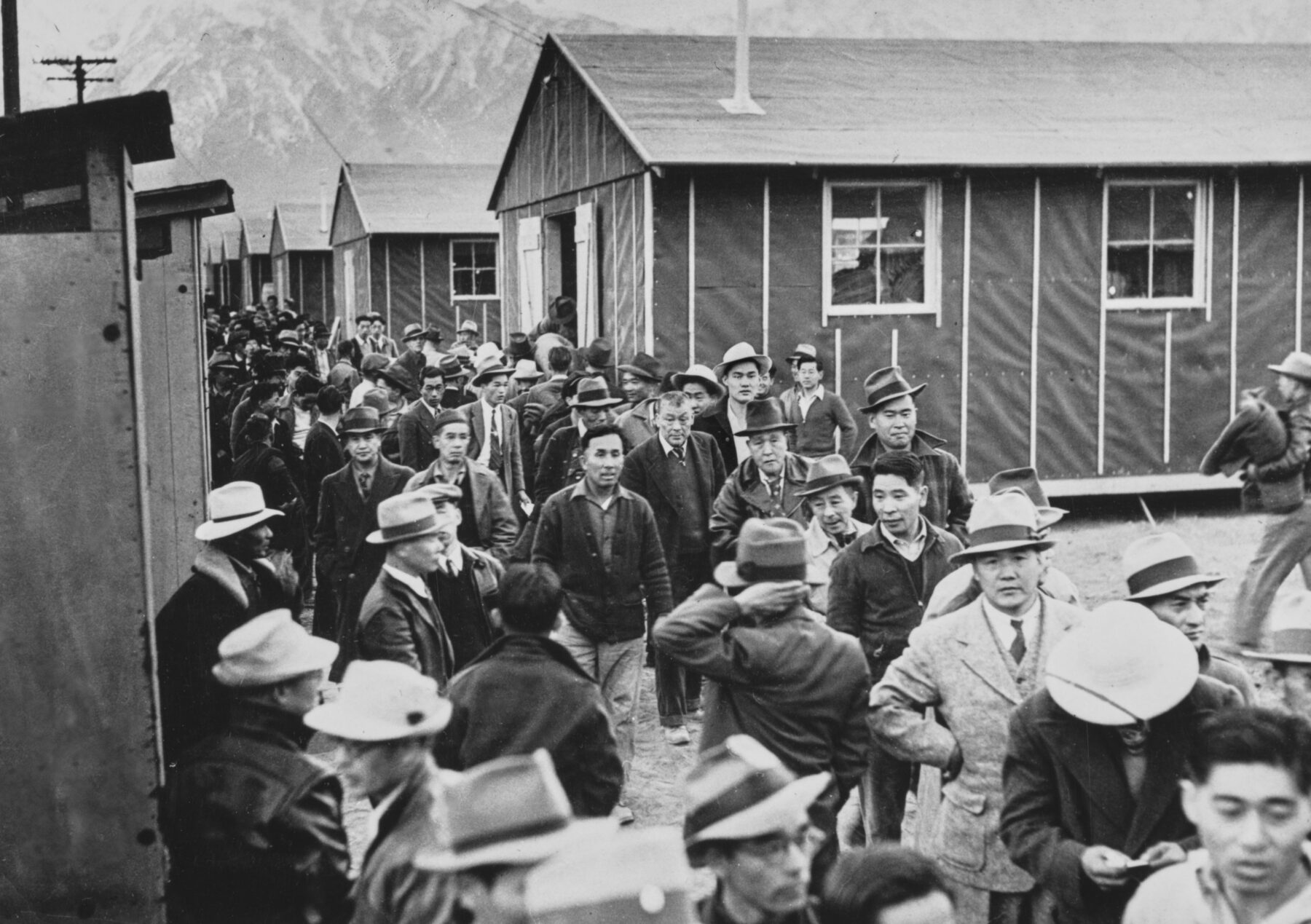
In 1941, Emilie Ikeda’s grandparents were forced to leave behind successful businesses and farms in Salinas, California, for camps lined with barbed wire and armed guards.
She said her family described the dust, the knee-deep sand and the heat as “unbearable.” “While sitting on army cots, they would place wet towels on their heads, as the dripping water would mix with their tears,” the NBC News correspondent said. “The conditions were rough…dangerous.”
This was America in the aftermath of Pearl Harbor, when Japanese Americans became the enemy because they happened to look like those who had dropped bombs on the U.S. Naval base. We often describe the imprisonment of Japanese Americans without due process of law as “internment.” But the term relates to an internationally agreed-upon security measure in which a government can detain soldiers or foreign nationals of the enemy power. The humiliating treatment of Japanese Americans during the war was not that.
The mass incarceration of Japanese American citizens had a wholly different legal basis from internment and brought with it none of the protections. It meant the government, by executive order, ripped nearly all Japanese Americans from their homes and property to live in camps for most of the war. It’s inaccurate to apply “interment” to the experience of these U.S. citizens, who were imprisoned by their own government, without their basic civil liberties and constitutional rights.
It is more accurate to use “incarceration,” “imprisonment,” “detention” or similar terms to describe this grave violation of rights. At NBC News, where I am director of standards for race, class and gender, we are making this distinction.
What led to calling them internment camps, and why should we change that now?
Conflating mass incarceration with internment may stem in part from a lack of discussion on this topic. The Department of Justice selected thousands of Japanese Americans in the immigrant generation, along with German and Italian nationals, in a separate and parallel system of detention. But not a single example of espionage or disloyalty by a Japanese American was ever documented during World War II.
Internment is a benign, misleading euphemism when applied to American citizens incarcerated by their own government. The words incarceration, imprisonment or detention better reflect the prison-like conditions faced by Japanese Americans as well as the baseless prevailing view at the time they were disloyal to the U.S. based on their ancestry.
In the early 1980s, a bipartisan commission concluded that the detention of Japanese Americans was unconstitutional, the result of “race prejudice, war hysteria, and a failure of political leadership.”
How else should journalists contextualize this mass incarceration?
Ultimately, the imprisonment of more than 120,000 Japanese Americans was a direct attack on their existence.
Shortly after Pearl Harbor, public regard toward Japanese Americans was low — a viewpoint further inflamed by the media. Columnist Walter Lippmann argued that Japanese Americans were waiting to strike with an act of sabotage when it would be most effective. Another columnist, Westbrook Pegler, wrote, “The Japanese in California should be under armed guard to the last man and woman right now and to hell with habeas corpus until the danger is over,” according to the National World War II Museum.
“The Japanese race is an enemy race,” wrote Lt. Gen. John L. DeWitt, commander of the Western Defense Command, in a 1942 report recommending the removal of anyone with Japanese ancestry from the entire area west of the Sierra Nevada and Cascade Mountains for “military necessity.”
This anti-Japanese sentiment lingered after the war. Many who returned to their old neighborhoods were met with open racism, intimidation and hatred. A 1971 poll found 11% of Americans perceived Japanese people as ”sneaky,” according to The Washington Post.
It’s also important to underline the cruelty of these camps. Ikeda said her uncle fell and dislocated his hip in the barracks, but he was denied care time and time again. “It was only after they were released from incarceration that [her Uncle] Fumio could finally be treated, and his one leg was 3 inches shorter than the other,” she said. “He suffered permanent damage after being denied proper care for years.”
The history of Japanese Americans should be told accurately and fairly. It’s important for journalists to question the language we use and consider how it can diminish the harsh realities communities face.


